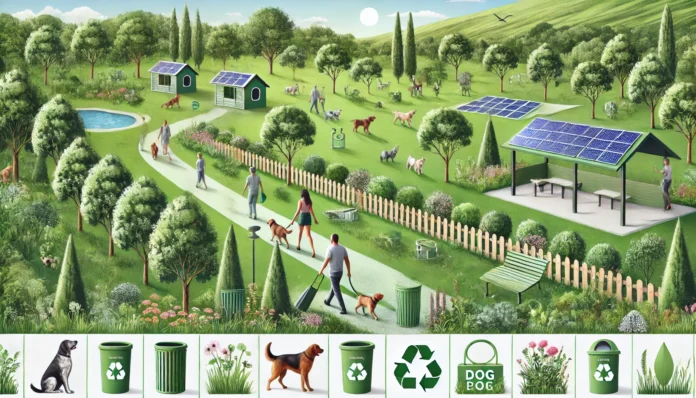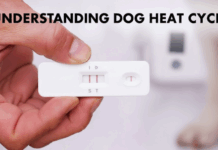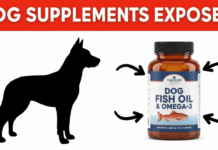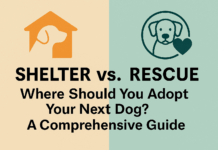Last Updated on February 3, 2025 by Dogs Vets
As environmental concerns continue to rise, more pet owners are seeking ways to reduce their ecological footprint and practice sustainable living. This shift towards sustainability is not only beneficial for the planet but also for the health and well-being of our beloved dogs. Sustainable dog ownership involves making conscious choices that minimize environmental impact while ensuring our pets lead happy and healthy lives.
In this article, we will explore eco-friendly practices for every pet parent, providing actionable tips and insights into sustainable dog ownership. From choosing eco-friendly products to adopting green habits, we will cover various aspects of dog care that can be made more sustainable. By the end of this article, you will have a comprehensive understanding of how to integrate sustainability into your dog’s lifestyle.
The Importance of Sustainable Dog Ownership
The pet industry, including pet food, toys, and accessories, has a significant environmental impact. According to a study, the carbon footprint of a medium-sized dog is comparable to that of a large SUV. This highlights the need for pet owners to adopt sustainable practices to reduce their environmental impact.
Environmental Impact of Pet Ownership
- Waste Generation: Dogs produce a substantial amount of waste, which can contribute to environmental pollution if not disposed of properly.
- Resource Consumption: The production of pet food, toys, and accessories consumes significant resources, including water, energy, and raw materials.
- Pollution: The manufacturing and transportation of pet products contribute to air and water pollution.
Benefits of Sustainable Dog Ownership
- Reduced Environmental Impact: By adopting sustainable practices, pet owners can significantly reduce their ecological footprint.
- Healthier Pets: Eco-friendly products and practices often promote better health for pets, as they are free from harmful chemicals and additives.
- Cost Savings: Many sustainable practices, such as making homemade treats or using reusable products, can lead to cost savings over time.
Eco-Friendly Practices for Dog Owners
1. Choosing Sustainable Pet Food
The food we feed our dogs has a significant environmental impact. Here are some tips for choosing sustainable pet food:
Opt for Eco-Friendly Brands
Look for pet food brands that prioritize sustainability in their production processes. These brands often use organic, locally-sourced ingredients and environmentally-friendly packaging.
Examples:
- Open Farm: Uses ethically-sourced ingredients and sustainable packaging.
- The Honest Kitchen: Offers human-grade, sustainably-sourced pet food.
Consider Plant-Based Diets
Plant-based diets can be a more sustainable option for dogs, as they typically have a lower carbon footprint compared to meat-based diets. However, it is important to consult with a veterinarian before making any dietary changes.
Reduce Food Waste
Minimize food waste by feeding your dog the right portion sizes and storing food properly. Consider using a smart feeder to ensure accurate portion control.
2. Eco-Friendly Pet Products
The products we use for our dogs can also have a significant environmental impact. Here are some tips for choosing eco-friendly pet products:
Biodegradable and Recyclable Options
Choose pet products made from biodegradable or recyclable materials, such as bamboo, recycled plastic, or natural fibers.
Examples:
- Bamboo Dog Bowls: Durable and biodegradable.
- Recycled Plastic Toys: Made from recycled materials and safe for dogs.
Reusable Products
Opt for reusable products, such as cloth poop bags, washable dog beds, and refillable water bottles. These products reduce waste and save money in the long run.
Examples:
- Cloth Poop Bags: Reusable and washable.
- Washable Dog Beds: Easy to clean and durable.
3. Sustainable Dog Grooming
Grooming is an essential part of dog care, but it can also generate a lot of waste. Here are some tips for sustainable dog grooming:
Use Natural and Organic Products
Choose grooming products made from natural and organic ingredients, which are safer for your dog and the environment.
Examples:
- Organic Shampoos: Free from synthetic chemicals and fragrances.
- Natural Brushes: Made from sustainable materials like bamboo.
Reduce Water Usage
Conserve water by using dry shampoos or taking shorter showers with your dog. Consider using a water-saving showerhead to further reduce water consumption.
4. Green Dog Training and Exercise
Training and exercise are crucial for a dog’s physical and mental well-being. Here are some eco-friendly tips for dog training and exercise:
Use Eco-Friendly Training Tools
Choose training tools made from sustainable materials, such as hemp or recycled materials.
Examples:
- Hemp Leashes and Collars: Durable and biodegradable.
- Recycled Material Toys: Safe and sustainable.
Opt for Outdoor Activities
Engage in outdoor activities that have a low environmental impact, such as hiking, walking, or playing at the park. These activities not only provide exercise but also strengthen the bond between you and your dog.
5. Responsible Waste Management
Proper waste management is essential for sustainable dog ownership. Here are some tips for managing dog waste responsibly:
Use Biodegradable Poop Bags
Choose biodegradable poop bags made from plant-based materials, which break down more easily in the environment.
Examples:
- Muttluks BioBags: Made from cornstarch and biodegradable.
- Earth Rated: Offers compostable and biodegradable options.
Compost Dog Waste
Consider composting dog waste using a pet waste composter, which breaks down waste into a safe, usable form of compost.
The Role of Technology in Sustainable Dog Ownership
Technology can play a significant role in promoting sustainable dog ownership. Here are some ways technology can help:
1. Smart Feeding Solutions
Smart feeders can help reduce food waste by providing precise portion control and feeding schedules. This not only benefits the environment but also promotes better health for your dog.
2. Eco-Friendly Apps
Several apps can help pet owners make more sustainable choices. For example, apps like “Sustainable Pet” provide tips and resources for eco-friendly pet care.
3. Online Communities
Online communities and forums can connect pet owners with like-minded individuals, providing a platform for sharing tips and experiences related to sustainable dog ownership.
Challenges and Considerations
While sustainable dog ownership offers many benefits, there are also challenges and considerations to keep in mind:
1. Cost
Eco-friendly products and practices can sometimes be more expensive than conventional options. However, many sustainable practices, such as making homemade treats or using reusable products, can lead to cost savings over time.
2. Availability
Finding eco-friendly pet products can be challenging, especially in areas with limited access to specialty stores. Online shopping can help overcome this challenge by providing access to a wider range of products.
3. Education
Pet owners may lack the knowledge or resources to practice sustainable dog ownership. Education and awareness are crucial for promoting sustainable practices and empowering pet owners to make informed choices.
Frequently Asked Questions
1. What is sustainable dog ownership?
Sustainable dog ownership involves making conscious choices that minimize environmental impact while ensuring dogs lead happy and healthy lives. This includes choosing eco-friendly products, adopting green habits, and reducing waste.
2. How can I make my dog’s diet more sustainable?
You can make your dog’s diet more sustainable by opting for eco-friendly pet food brands, considering plant-based diets, and reducing food waste. Consult with a veterinarian before making any dietary changes.
3. What are some eco-friendly pet products?
Eco-friendly pet products include biodegradable and recyclable options, such as bamboo dog bowls, recycled plastic toys, and cloth poop bags. Reusable products, like washable dog beds, are also a sustainable choice.
4. How can I reduce my dog’s carbon footprint?
You can reduce your dog’s carbon footprint by choosing sustainable pet food, using eco-friendly products, and engaging in outdoor activities that have a low environmental impact. Additionally, proper waste management, such as using biodegradable poop bags, can help minimize environmental impact.
5. What role does technology play in sustainable dog ownership?
Technology can promote sustainable dog ownership by providing smart feeding solutions, eco-friendly apps, and online communities for sharing tips and experiences. These tools can help pet owners make more informed and sustainable choices.
Conclusion
Sustainable dog ownership is an important step towards a more environmentally conscious lifestyle. By adopting eco-friendly practices, pet owners can significantly reduce their ecological footprint and promote the health and well-being of their dogs. From choosing sustainable pet food and products to embracing green habits and responsible waste management, there are numerous ways to integrate sustainability into your dog’s lifestyle.
As we continue to face environmental challenges, it is crucial for pet owners to take action and make informed choices. By doing so, we can ensure a healthier planet for future generations and provide the best possible care for our beloved dogs.

















